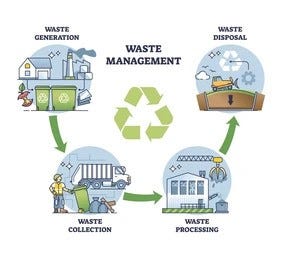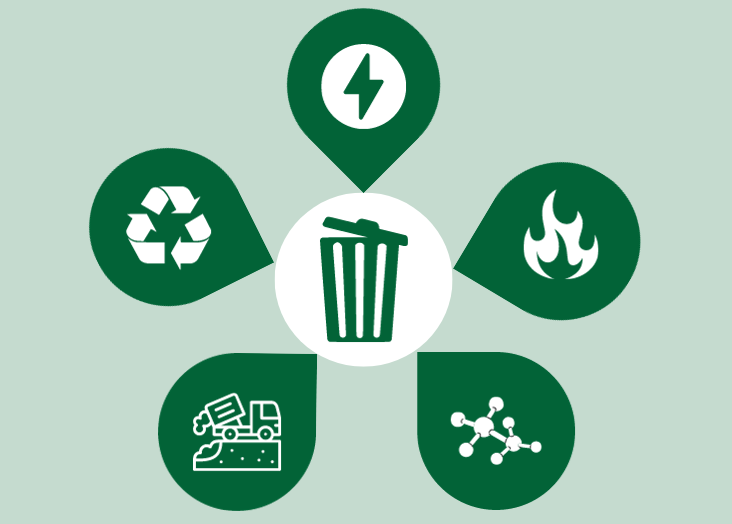Discover the Advantages of Recycling Lives Services for Your Business
Discover the Advantages of Recycling Lives Services for Your Business
Blog Article
Checking Out Various Sorts Of Waste in Modern Waste Monitoring Equipment
The modern landscape of waste management involves navigating an intricate array of waste types, each calling for specialized handling and disposal methods to mitigate environmental effects. Municipal strong waste, unsafe waste, digital waste, and organic waste each existing distinctive challenges and opportunities for source healing.
Municipal Solid Waste
Municipal strong waste, often described as house garbage or rubbish, includes a selection of discarded materials created by household, industrial, and institutional resources within a community. This waste stream typically includes products such as packaging, food scraps, yard trimmings, paper, plastics, fabrics, and discarded home items. The monitoring of community strong waste is a critical element of city preparation and public health and wellness, requiring reliable collection, transportation, and disposal systems.
Reliable waste monitoring systems are designed to decrease environmental influence while maximizing source recuperation. This usually entails a combination of strategies consisting of landfilling, composting, and recycling. Recycling programs target materials like paper, glass, steels, and particular plastics, diverting them from land fills and reestablishing them into the manufacturing cycle. Composting natural waste, such as food scraps and backyard trimmings, not only decreases landfill usage however also generates important soil amendments.
Towns must additionally address the financial and logistical obstacles connected with waste monitoring. Applying pay-as-you-throw systems, boosting public recognition, and spending in technology can dramatically improve waste diversion rates. By incorporating these techniques, towns can cultivate sustainable neighborhoods, minimize greenhouse gas exhausts, and preserve all-natural sources.
Contaminated Materials

Reliable contaminated materials administration involves numerous important steps: recognition, disposal, partition, and therapy. Recognition involves the classification of waste based upon its hazardous properties. Partition makes sure that hazardous products are stored individually from non-hazardous waste to avoid cross-contamination. Therapy techniques, such as chemical neutralization, incineration, and stablizing, are used to decrease the toxicity, quantity, or wheelchair of the waste. Disposal alternatives, including secure garbage dumps and below ground storage space, are chosen to make sure long-lasting containment.
Regulatory structures, such as the Resource Conservation and Recuperation Act (RCRA) in the USA, provide guidelines and criteria for dangerous waste monitoring. Adherence to these guidelines, coupled with improvements in waste treatment modern technologies, is important in alleviating the risks associated with contaminated materials.
Electronic Waste
Digital waste, typically referred to as e-waste, represents a rapidly expanding challenge in waste monitoring systems globally. This kind of waste encompasses thrown out digital gadgets and tools such as smart devices, computer systems, televisions, and other digital home appliances. The fast rate of technological development, coupled with decreasing item life expectancies and consumer need for the most up to date tools, has actually greatly enhanced the volume of e-waste generated annually.
E-waste is especially bothersome due to its intricate structure, frequently consisting of unsafe compounds like cadmium, mercury, and lead, which present considerable ecological and health and wellness dangers if not effectively taken care of. Alternatively, e-waste also has valuable products such as silver, gold, and copper, which can be recovered and recycled. The double nature of e-waste-- both hazardous and valuable-- demands specific handling, recycling, and disposal processes.
Effective e-waste management involves strict regulatory frameworks, robust collection systems, and progressed reusing technologies. Public recognition and engagement are crucial, as inappropriate disposal methods, such as his comment is here prohibited unloading and casual recycling, exacerbate environmental contamination and wellness dangers. Improving e-waste administration practices is essential for mitigating ecological impact and recuperating important resources in an increasingly electronic globe.

Organic Waste
Organic waste, consisting of kitchen scraps, backyard trimmings, and farming deposits, represents a considerable section of the global waste stream. This sort of waste is biodegradable, indicating it can be damaged down by bacteria into simpler natural compounds. In spite of its capacity for natural disintegration, incorrect administration of natural waste can lead to adverse environmental influences, consisting of the exhaust of greenhouse gases such as methane, which add to environment change.
Reliable administration of natural waste is vital for minimizing these environmental influences (recycling lives services). Composting is an extensively embraced approach, changing organic waste into nutrient-rich compost that can improve dirt health and wellness and agricultural productivity. In addition, anaerobic Check This Out food digestion is an arising modern technology that transforms natural waste right into biogas, a sustainable energy source, and digestate, which can be utilized as fertilizer
Municipalities and waste monitoring entities need to implement robust organic waste collection and treatment programs to optimize the advantages of these processes. Public education and learning campaigns can likewise play an essential duty in encouraging households and companies to separate organic waste from other types of waste. By focusing on the management of organic waste, cultures can lower garbage dump use, reduced greenhouse gas discharges, and create useful results for farming usage.

Cutting-edge Waste Management
In the realm of waste management, innovative methodologies are changing how societies manage their refuse, aiming for sustainability and efficiency. One noticeable innovation is the implementation of clever waste bins equipped with sensors that keep an eye on fill levels and maximize collection paths.
An additional significant development is the adoption of waste-to-energy (WtE) modern technologies. By transforming non-recyclable waste into functional energy through procedures such as incineration and anaerobic food digestion, WtE lowers garbage dump concern and supplies a renewable resource resource. Developments in chemical reusing permit for the breakdown of complicated plastics right into their original monomers, enabling the production of new, top quality plastic items.
Moreover, the round economic situation version is acquiring grip, emphasizing the design of items and systems that prioritize reusability and source efficiency. This holistic method urges sectors to decrease waste generation from the start. Through these innovative approaches, modern waste monitoring systems are not just dealing with the prompt challenges of garbage disposal yet also leading the method for a more sustainable future.
Final Thought
A comprehensive understanding of community solid waste, harmful waste, electronic waste, and organic waste, paired with the application of cutting-edge waste management solutions, is crucial for reducing ecological influences. Incorporating innovations such as smart waste containers and waste-to-energy systems can improve effectiveness and sustainability. Efficient waste management approaches not only foster source healing but also promote public recognition and involvement, ultimately adding to the development of a my explanation circular economy.
The modern landscape of waste administration entails browsing a complicated selection of waste types, each requiring specialized handling and disposal approaches to minimize ecological impacts. Local strong waste, unsafe waste, electronic waste, and organic waste each present distinct challenges and opportunities for resource healing.Digital waste, typically referred to as e-waste, stands for a swiftly expanding difficulty in waste monitoring systems around the world. With these innovative strategies, contemporary waste administration systems are not only dealing with the prompt challenges of waste disposal yet likewise paving the means for a more lasting future.
A thorough understanding of community solid waste, unsafe waste, electronic waste, and natural waste, coupled with the implementation of innovative waste monitoring remedies, is important for reducing environmental impacts. (recycling lives services)
Report this page